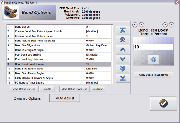Feed Boost Benders
Contents |
About Feed-Boost Bending
Feed-Boost bending, sometimes called "Boost-Bending" is known to have benefits in the control of the flow of material in a tube shape inside the bend dies during bending. The process requires that a carriage (or some other actuator) provide force on the back of a tube during draw bending. This presses the tube into the back of the die while the tube is being drawn into the bend die.
Our experiments show that even a small additional force on the back of the tube (like an extra 100 lbs of force) can have a significant impact on the quality of the bend. This is why most of our benders allow for some control of the force on the back of the tube.
Does the Advanced Tubular CNC Bender support Feed-Boost Bending?
YES - CNC Bender software is designed to allow control of the FEED axis force during Feed-Bending on a scale of 1 to 100%. Our software is used in SMT Industries benders. Most SMT benders use what is referred to as TORQUE mode when controlling the feed axis.
Servo motors are often controlled in either "VELOCITY" or "TORQUE" modes. Rather than attempting to achieving and maintaining a fixed velocity, torque modes supply a constant torque force on a spinning servo. On the feed axis of our benders, this is translated into a programmable force on the back of the tube during Feed-Bending.
Feed-Boost Bending on Standard Benders
For remanufactured benders that were not originally designed for Feed-Boost bending, I recommend that an upper limit be observed in the servo torque setting. For example, the standard Eaton Leonard carriage is typically capable of repeatedly using 50% torque without damaging the back of the carriage housing. Forces greater than this could cause the collet spindle to press through the back of the housing.
Feed-Boost Bending on Boost Benders
SMT has built benders that boost behind the FEED axis with a greater force than the standard benders. Again, this requires an enhanced carriage assembly that can take these kinds of pressures without causing the collet spindle to burst through the carriage body.
--Mcone 11:10, 29 June 2006 (EDT)

